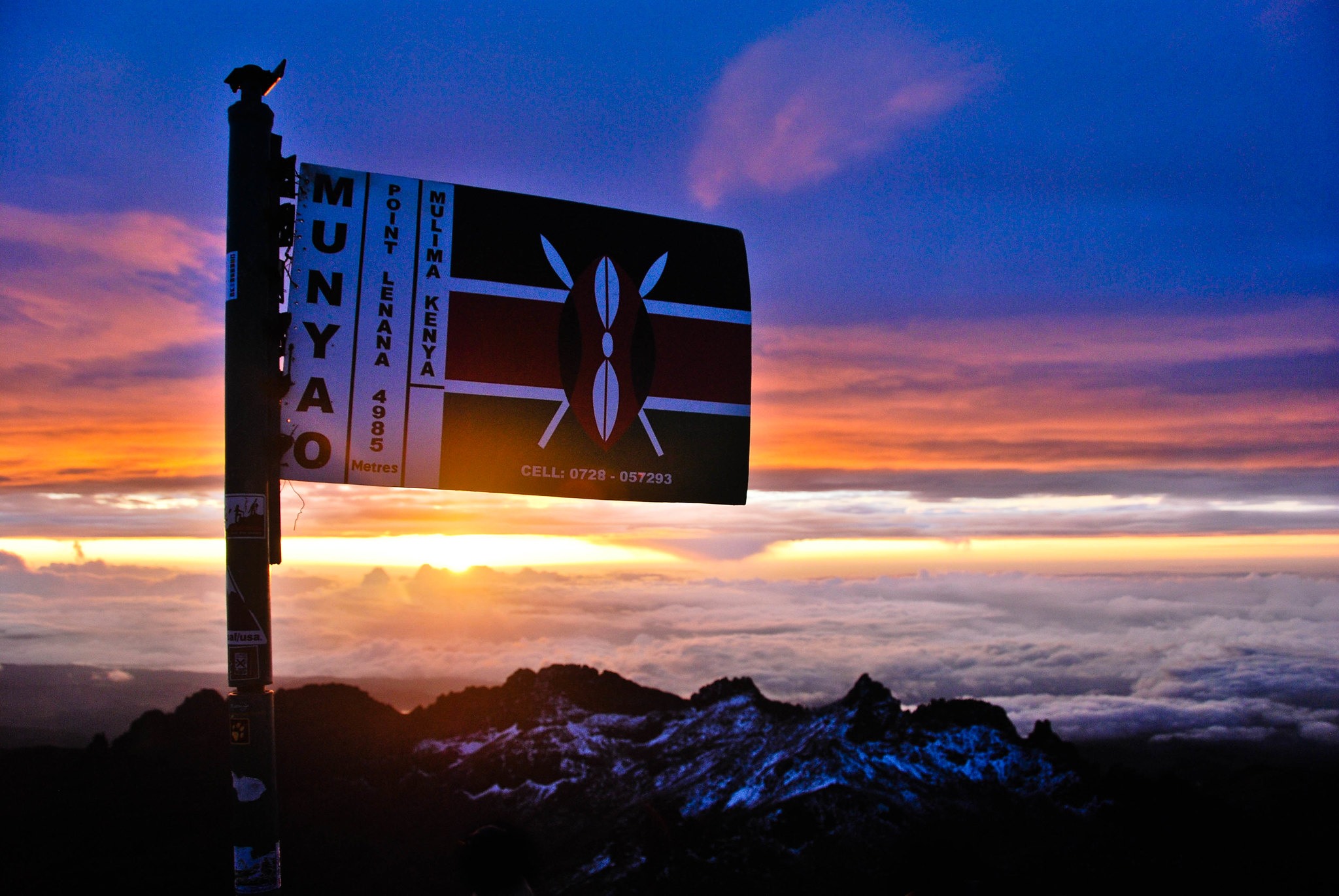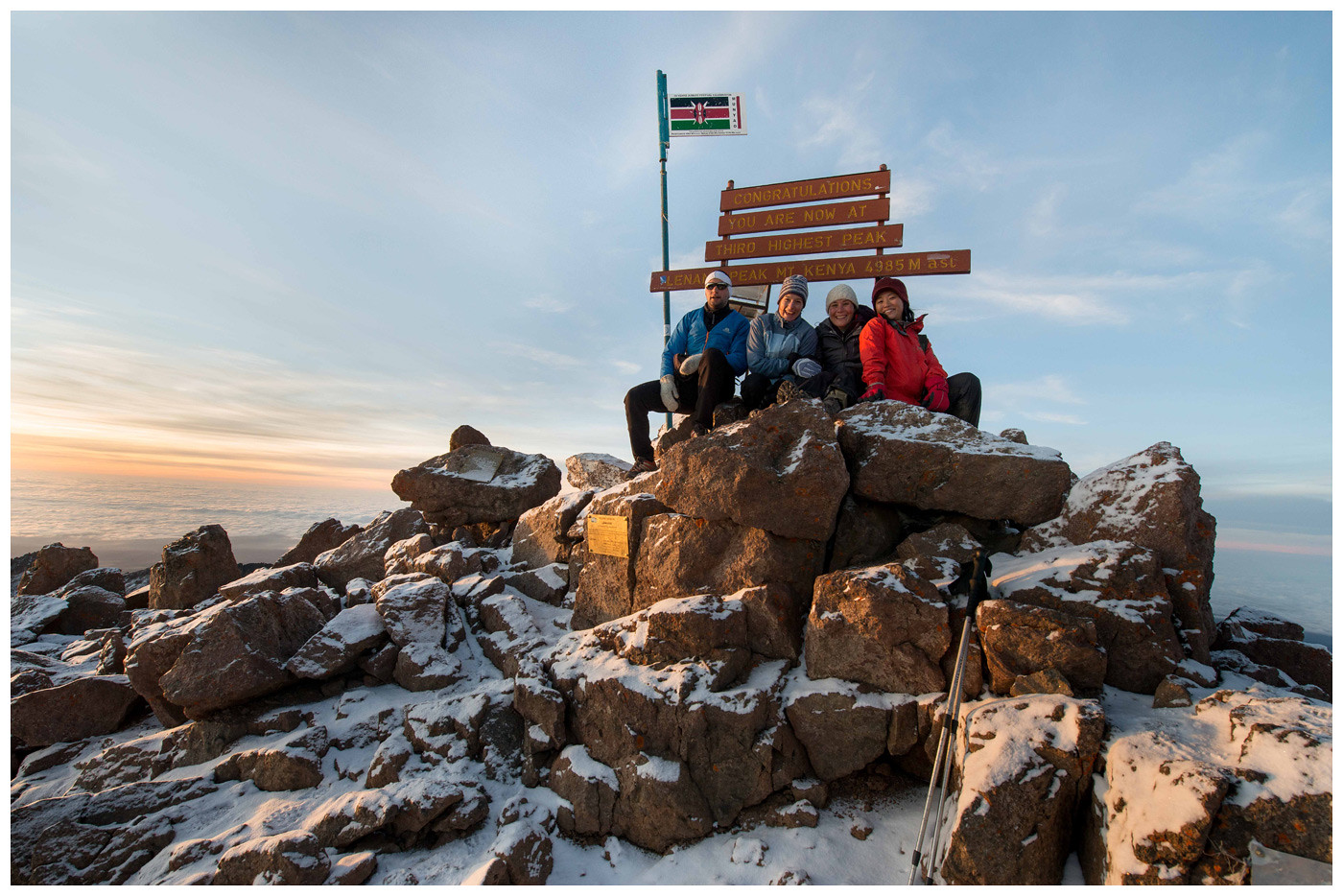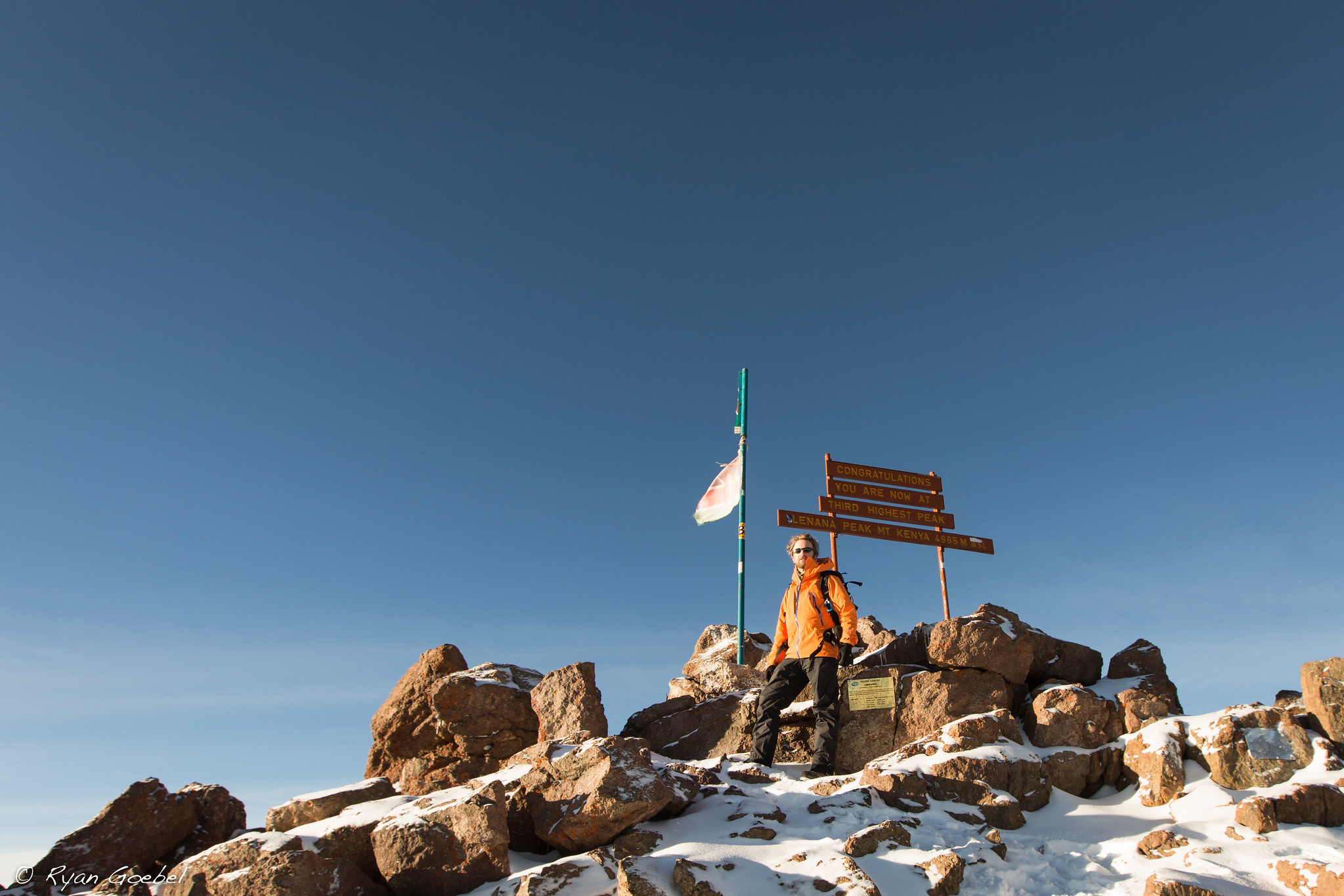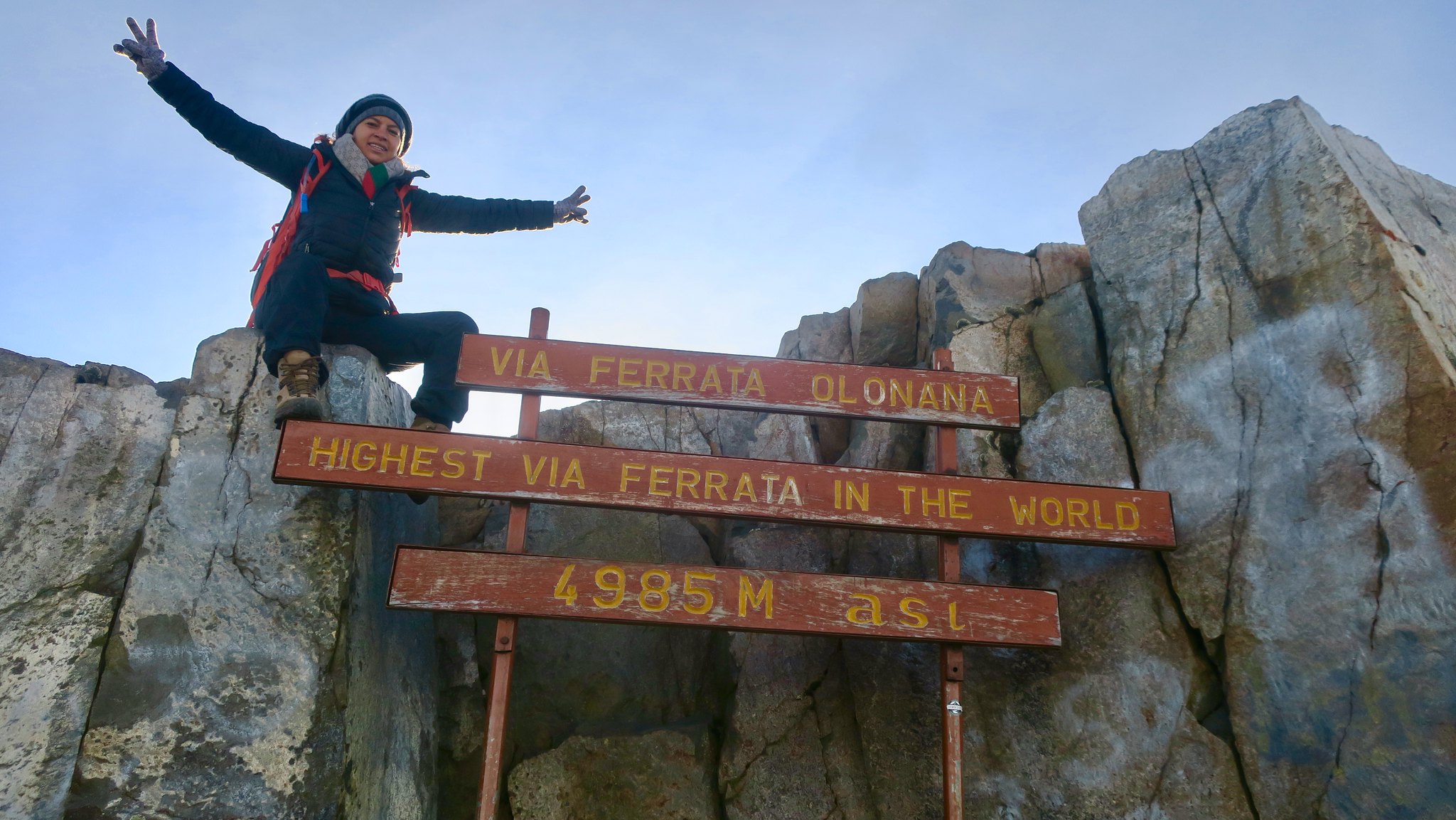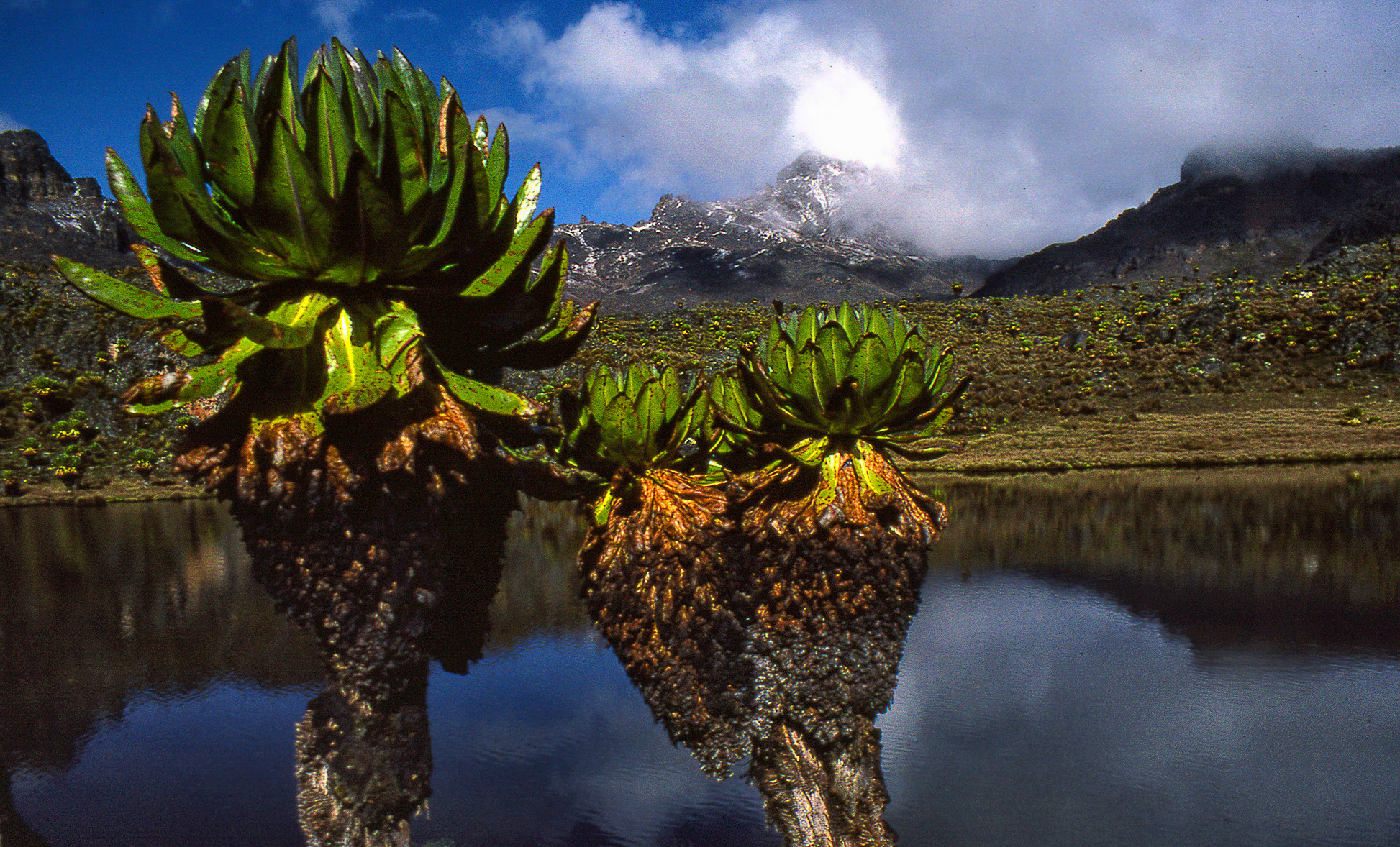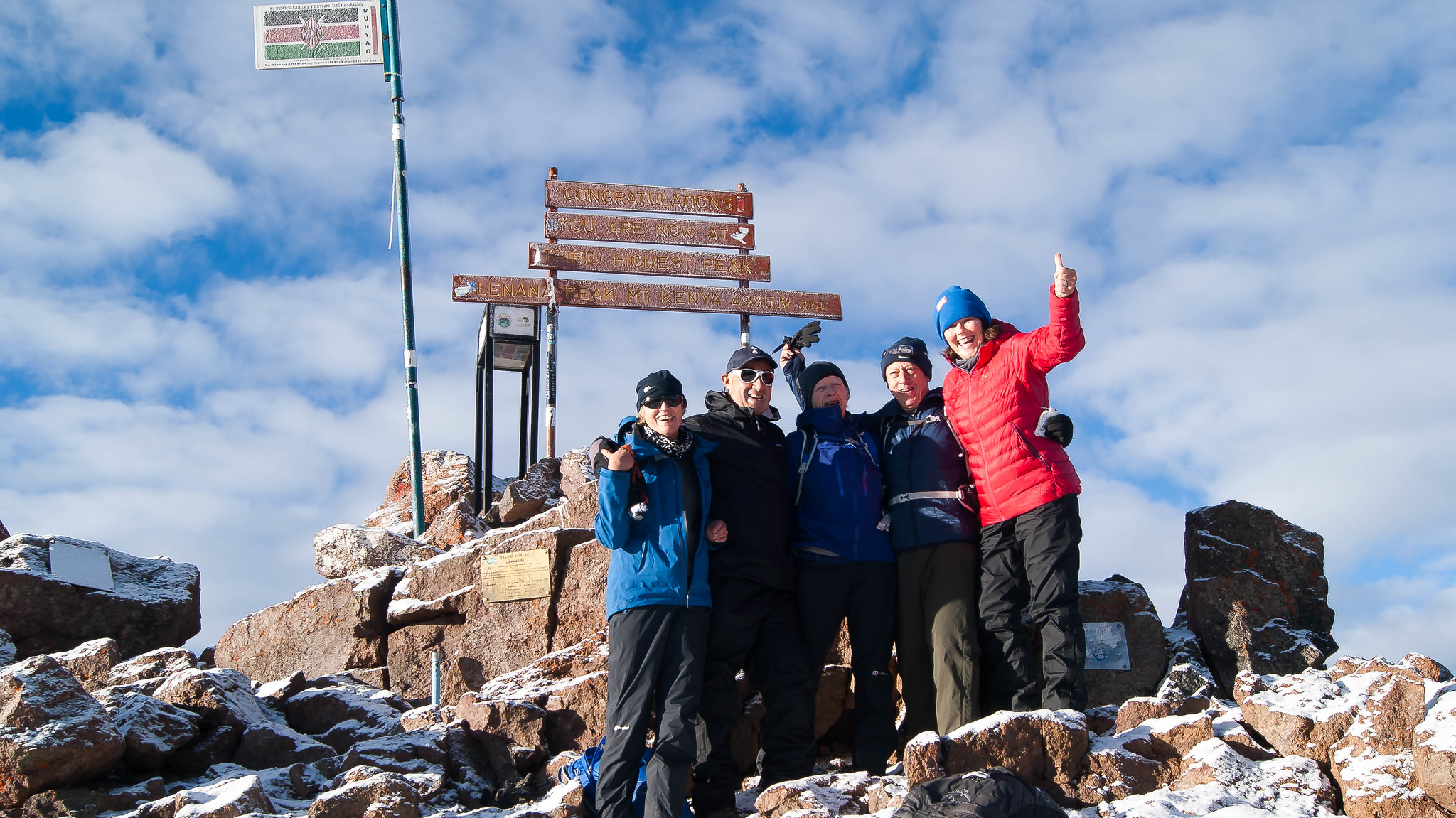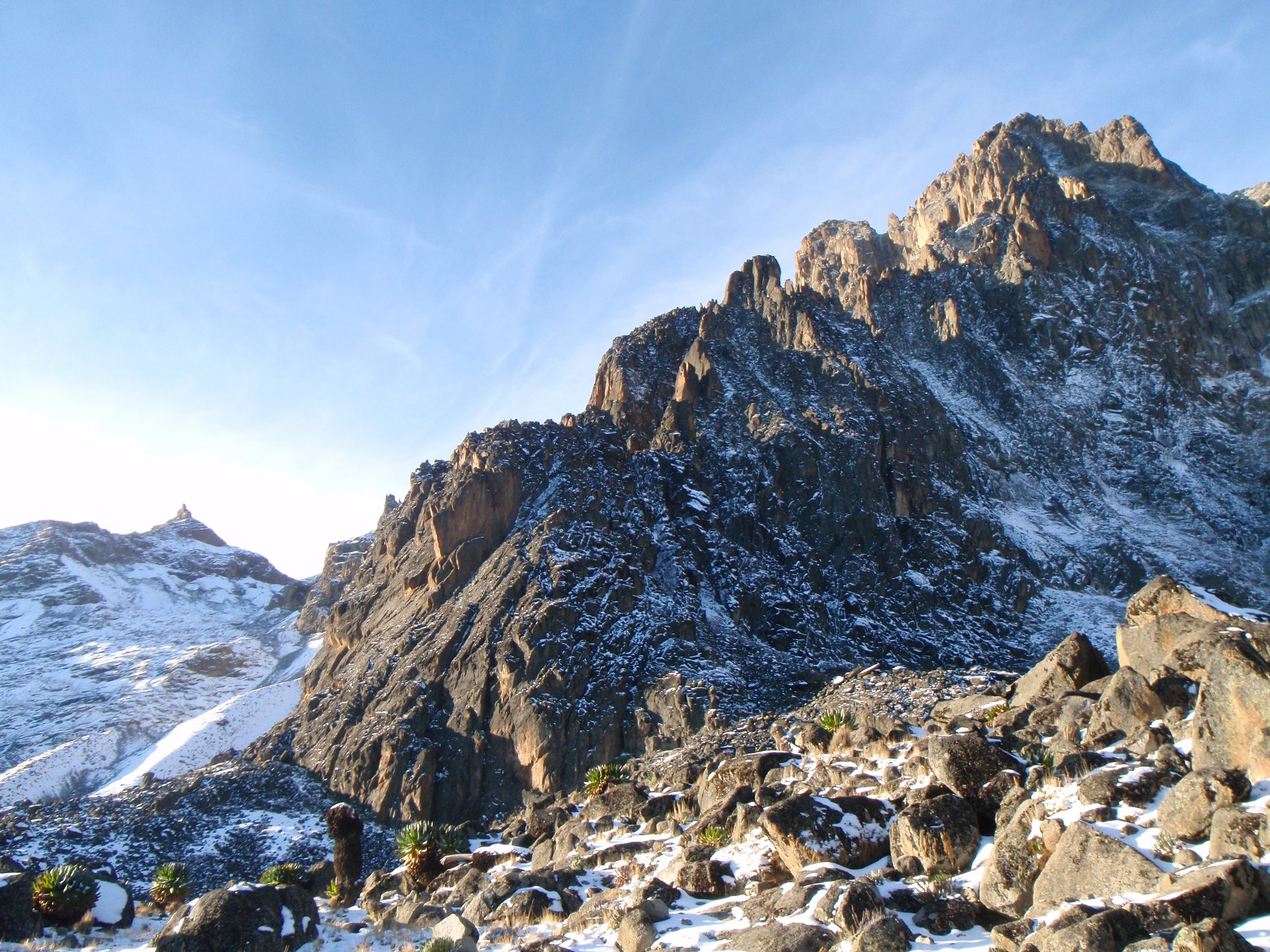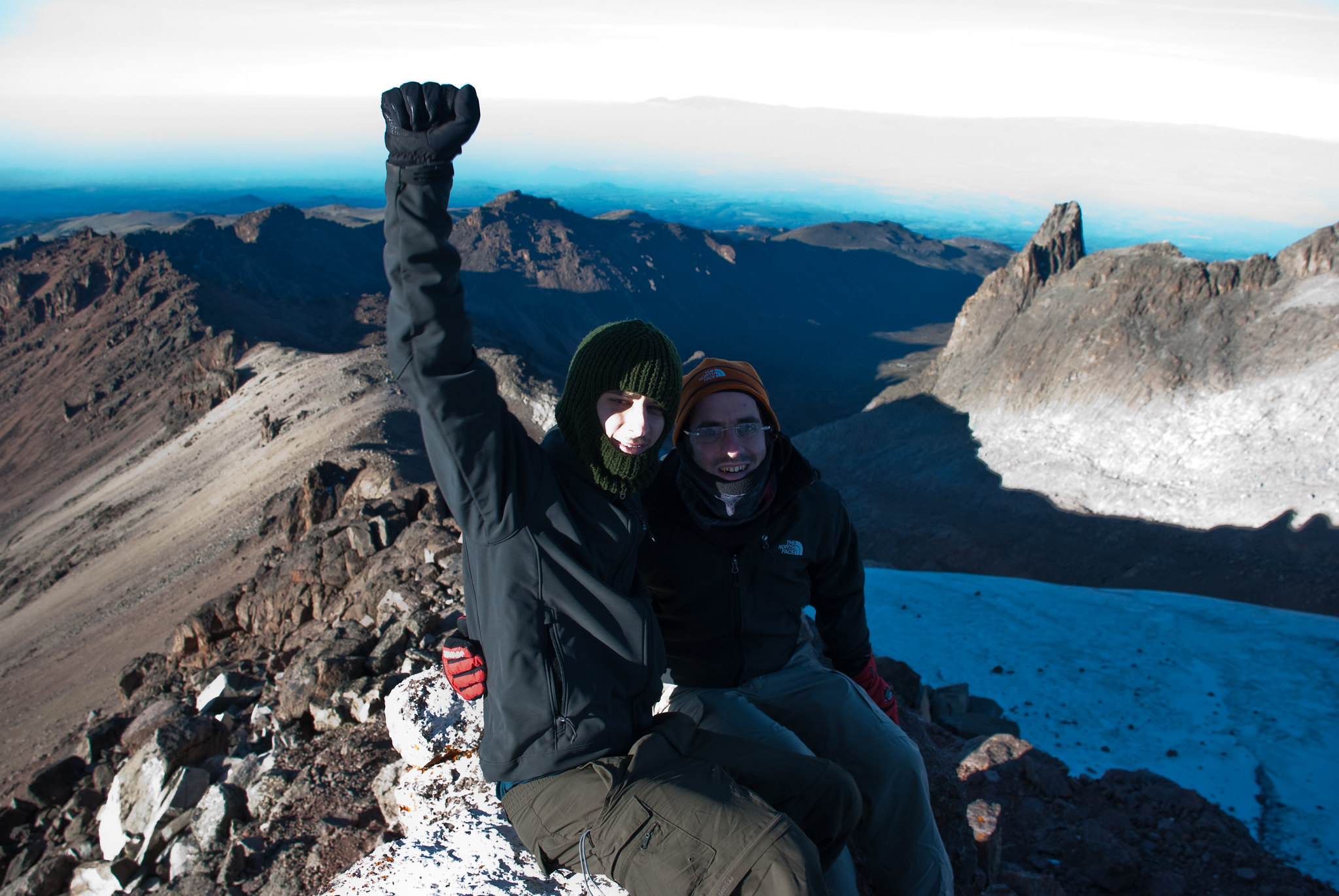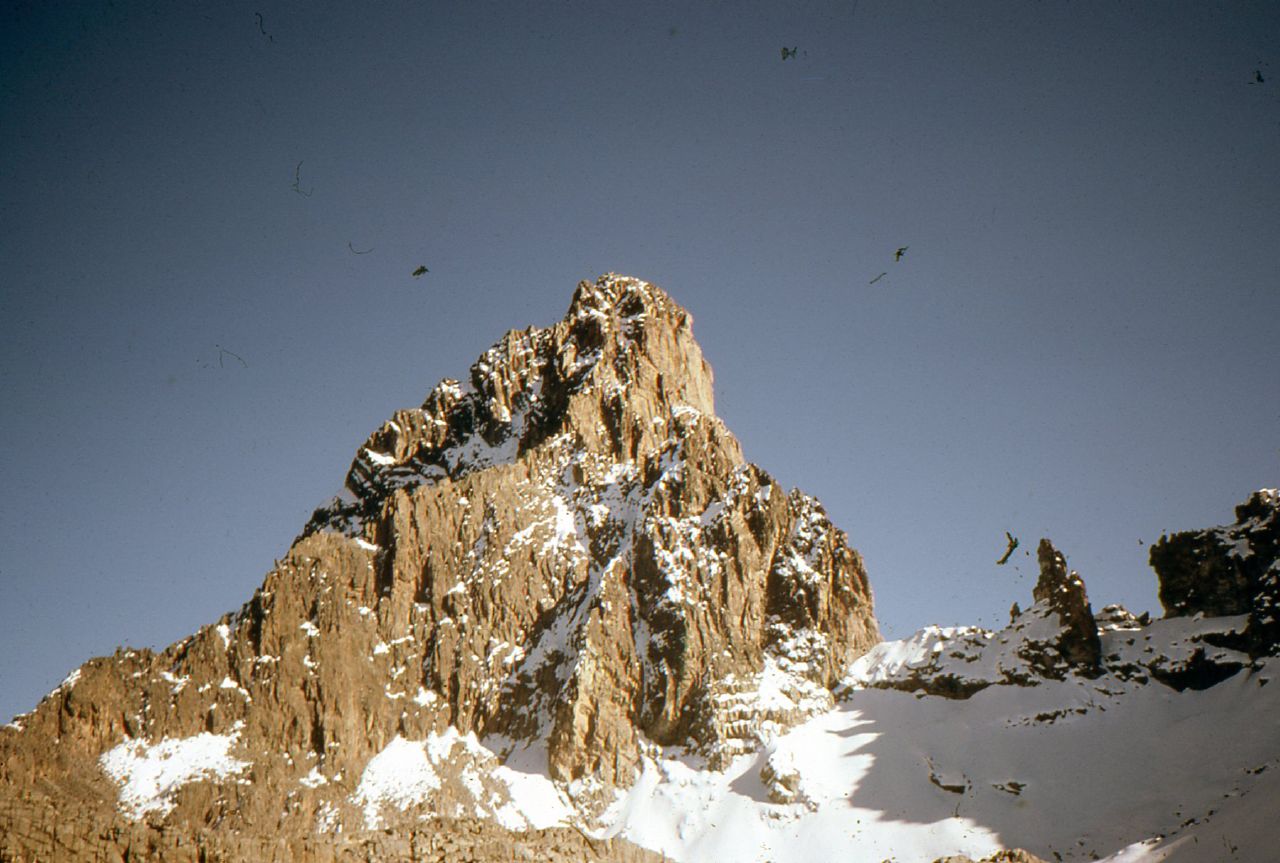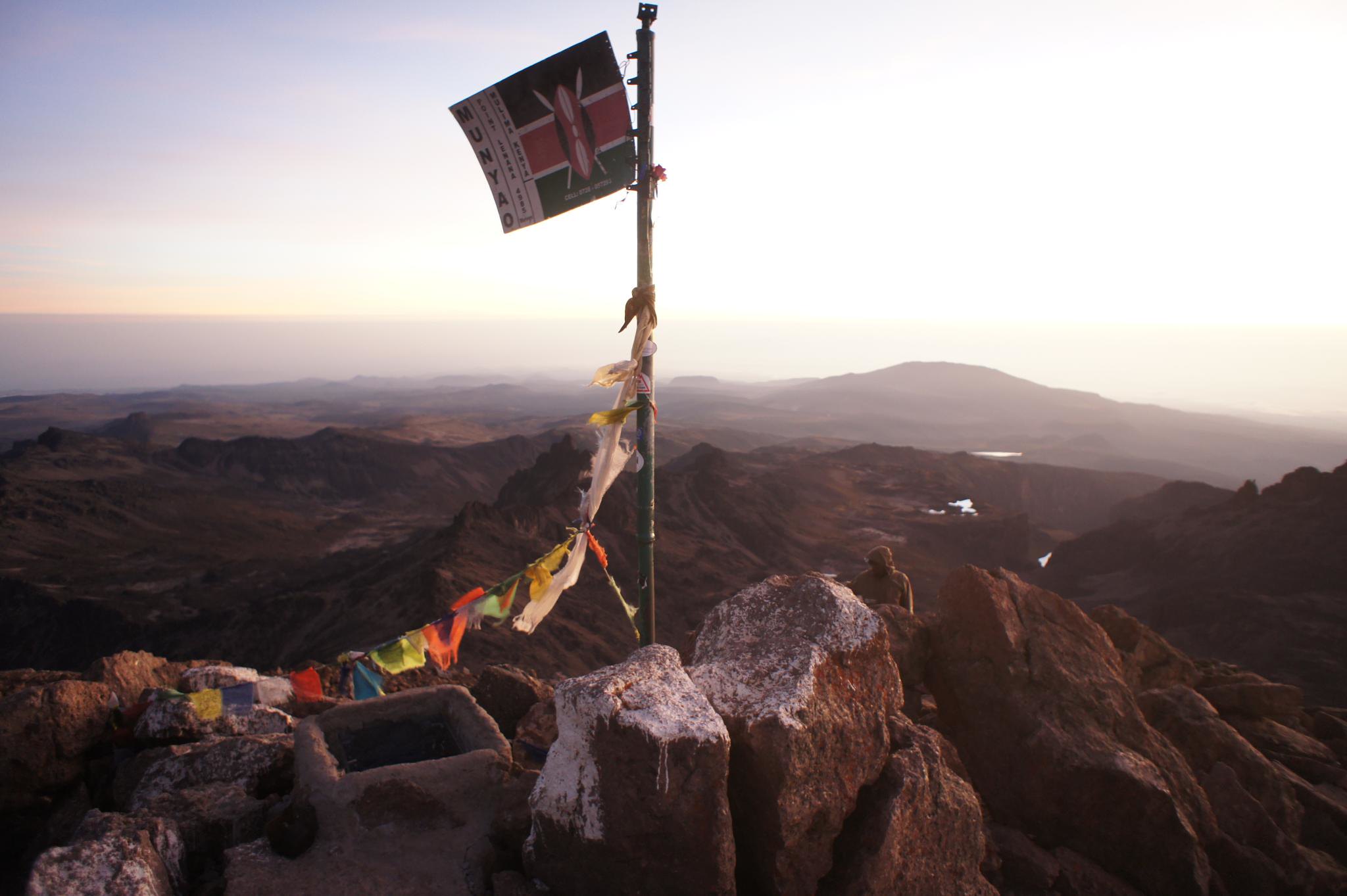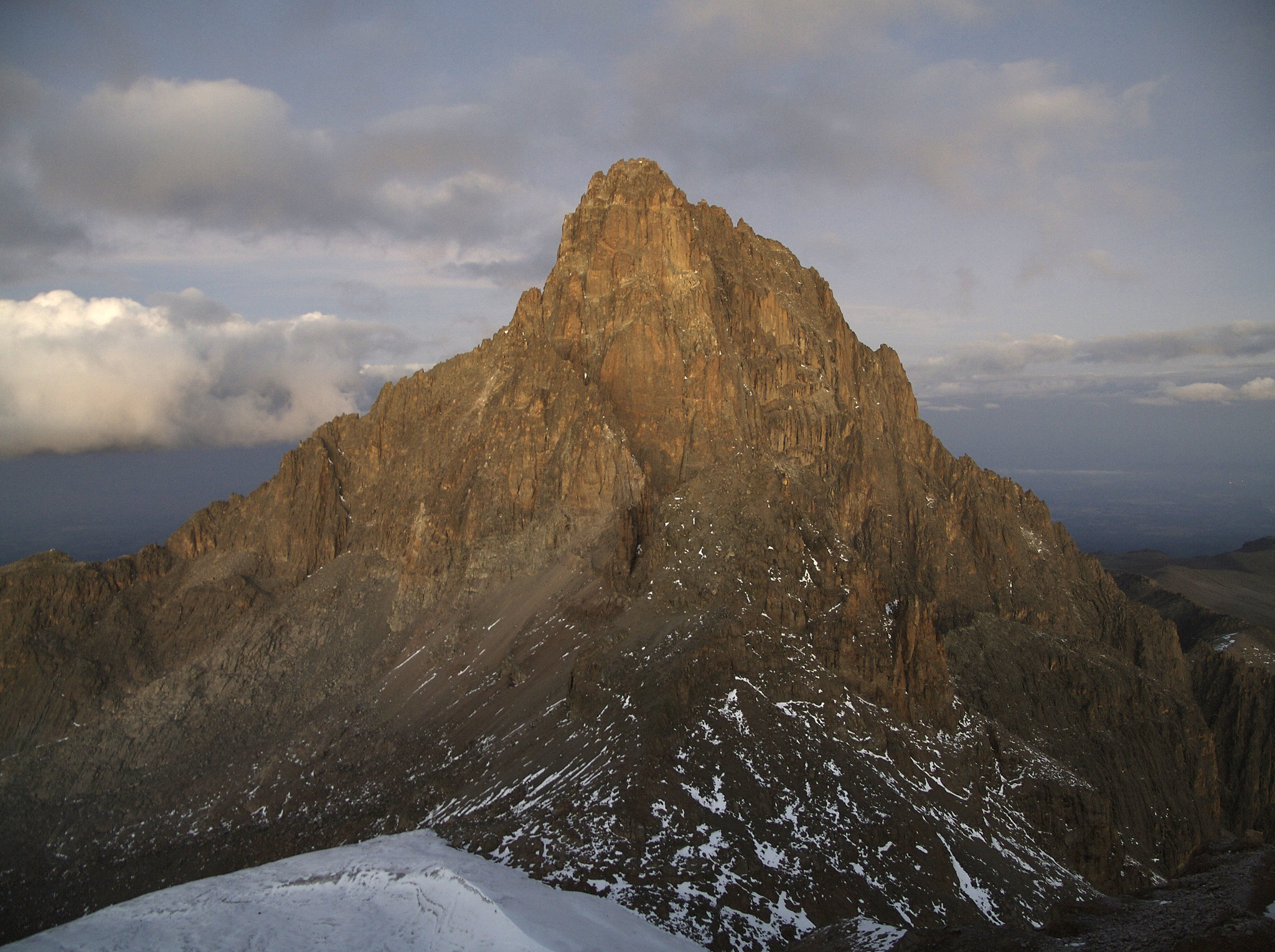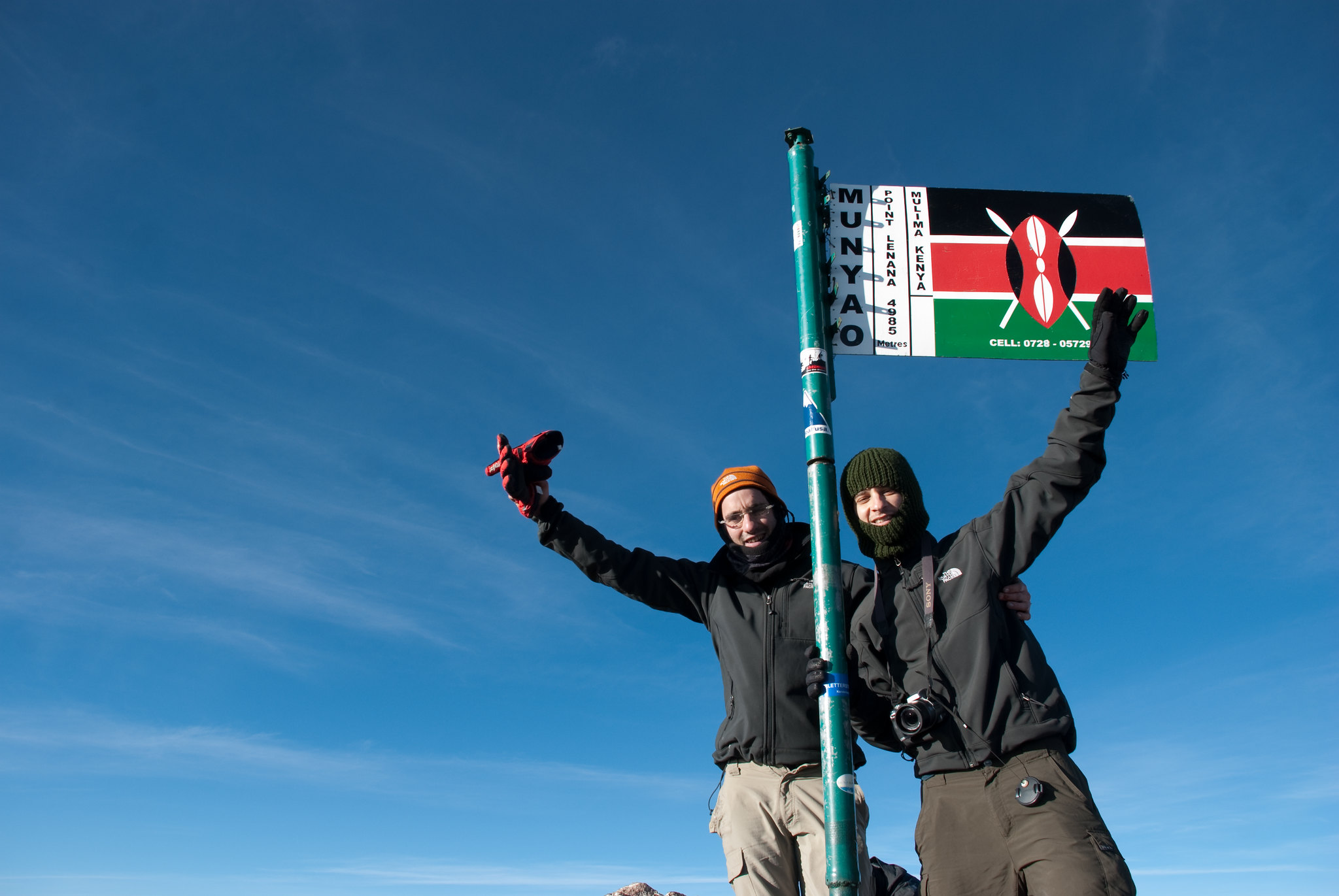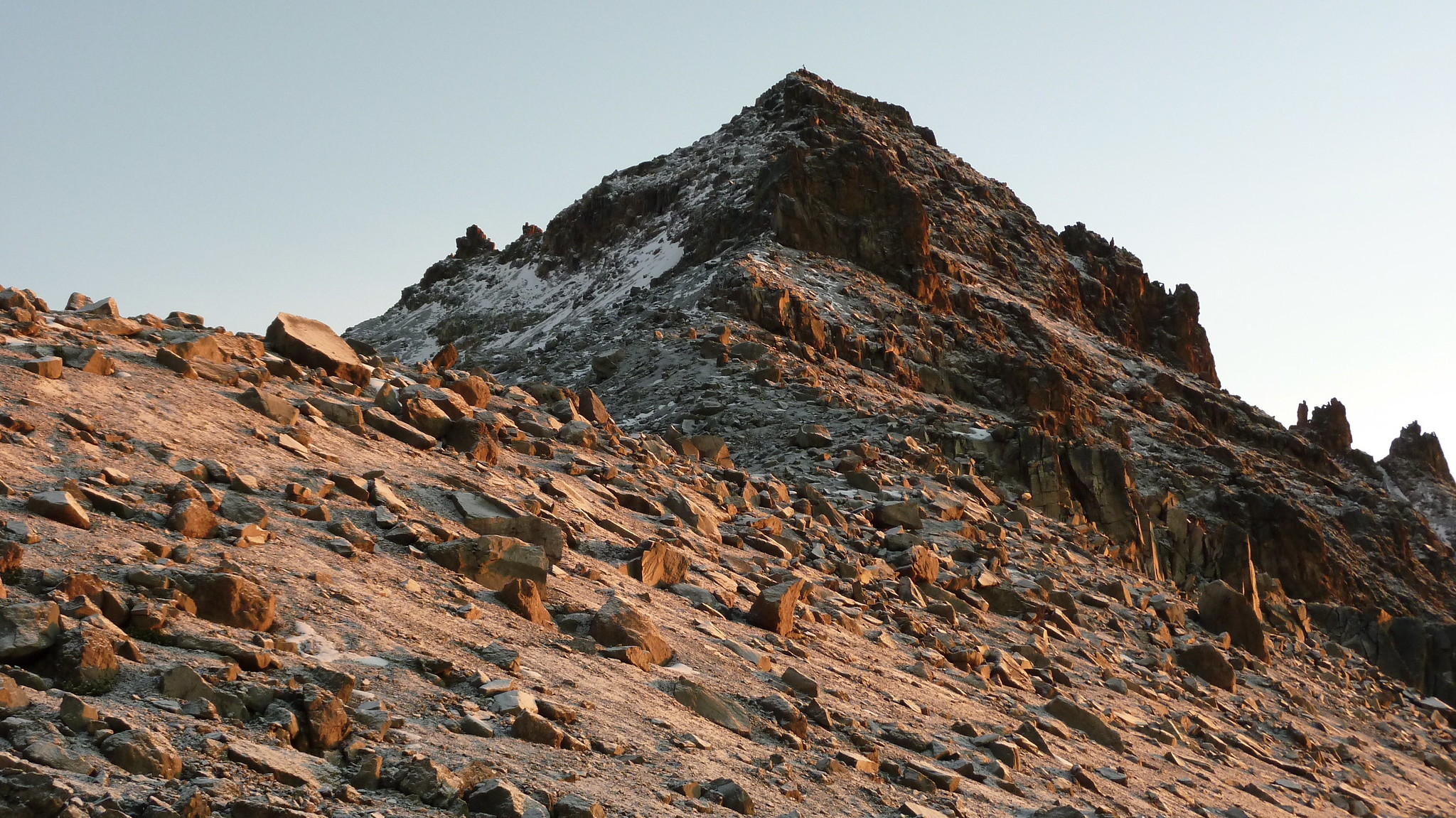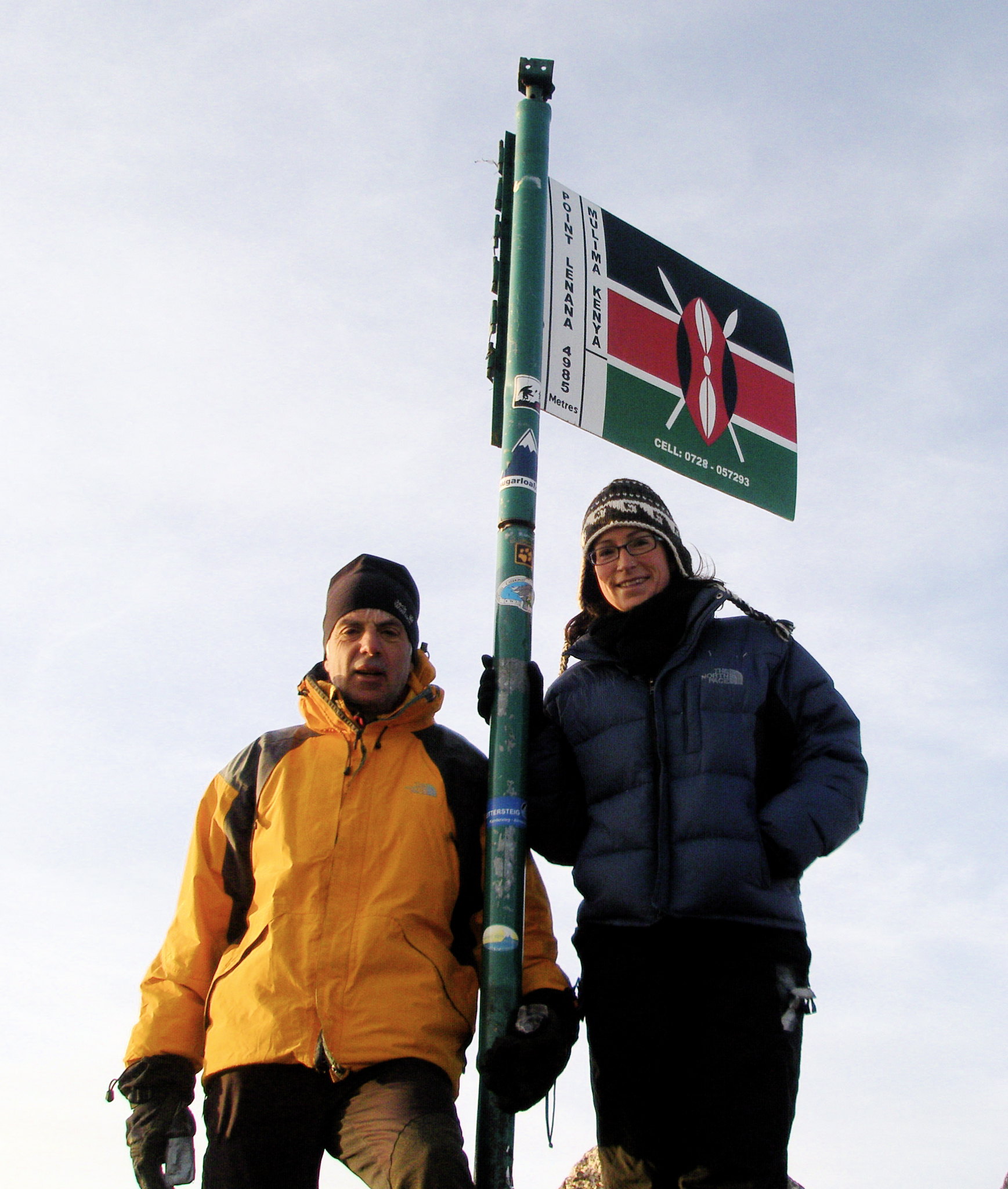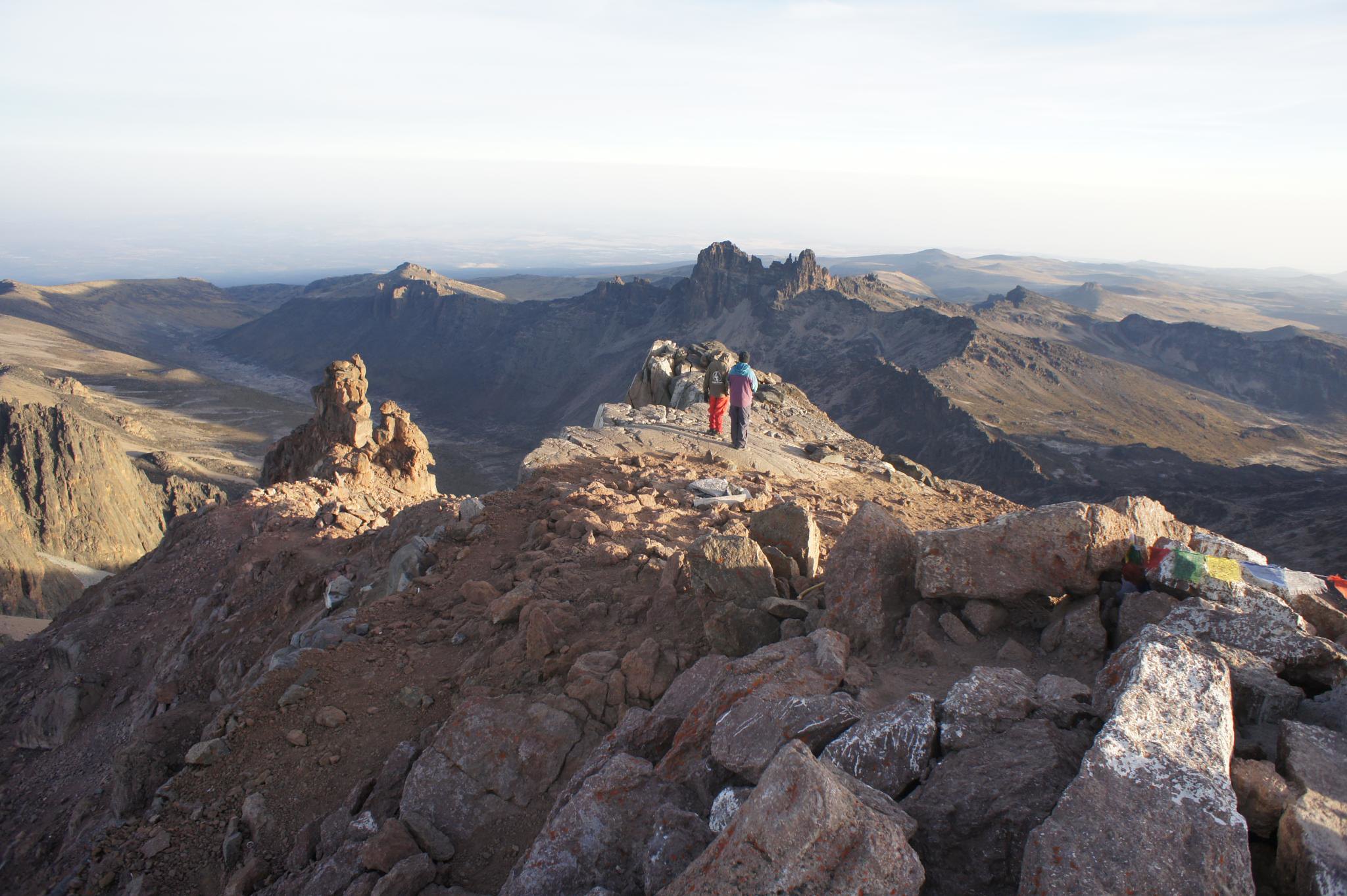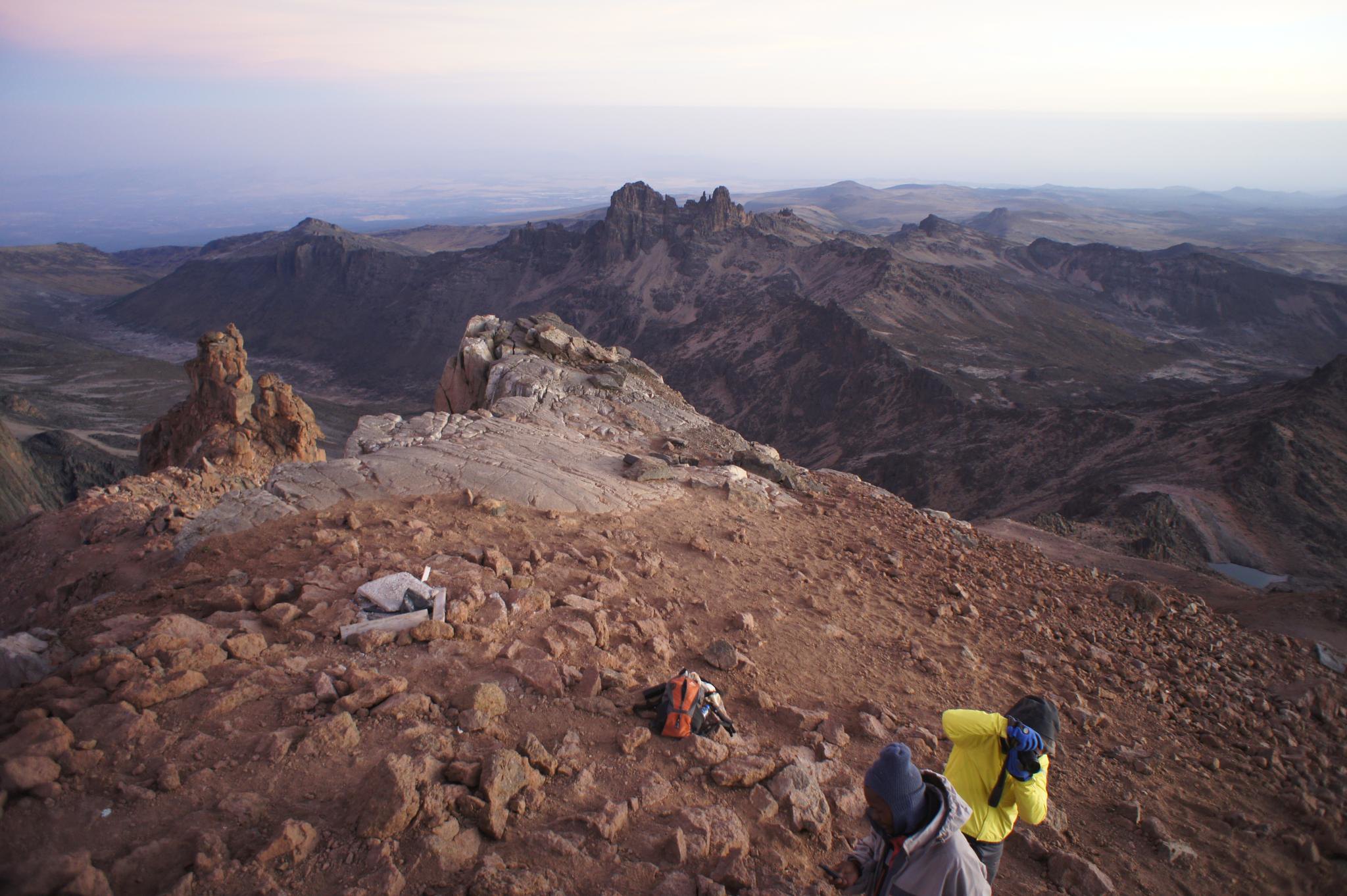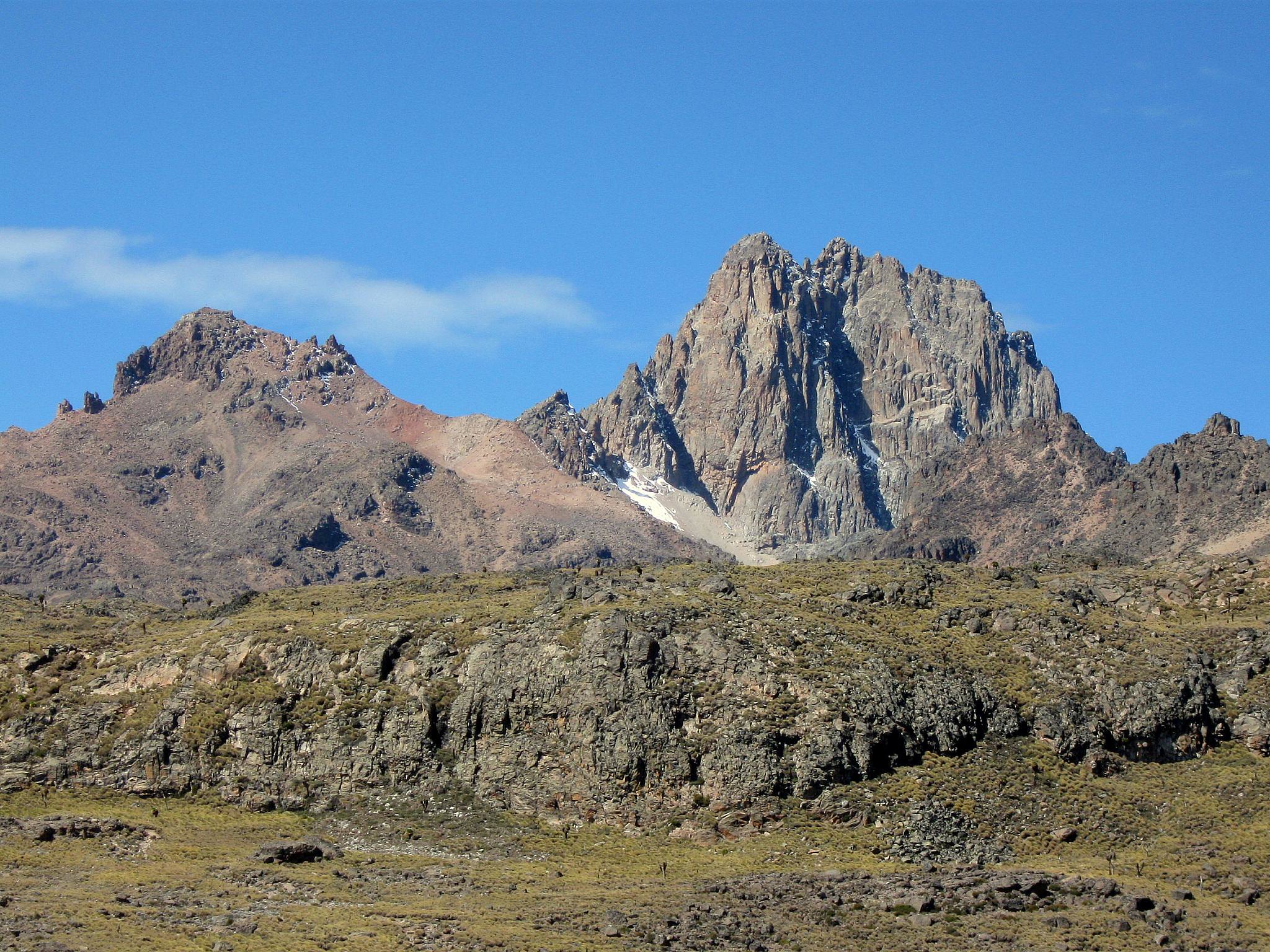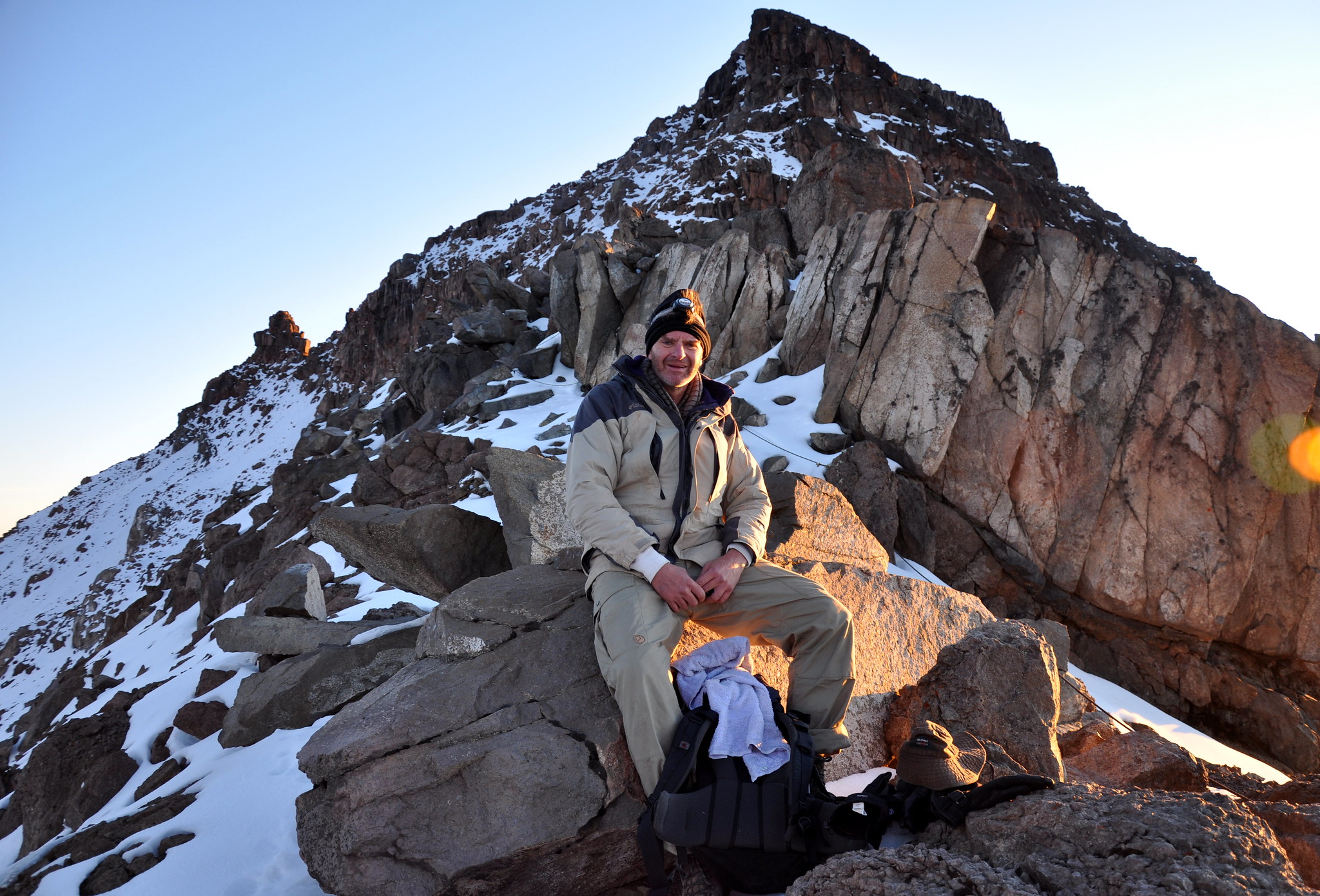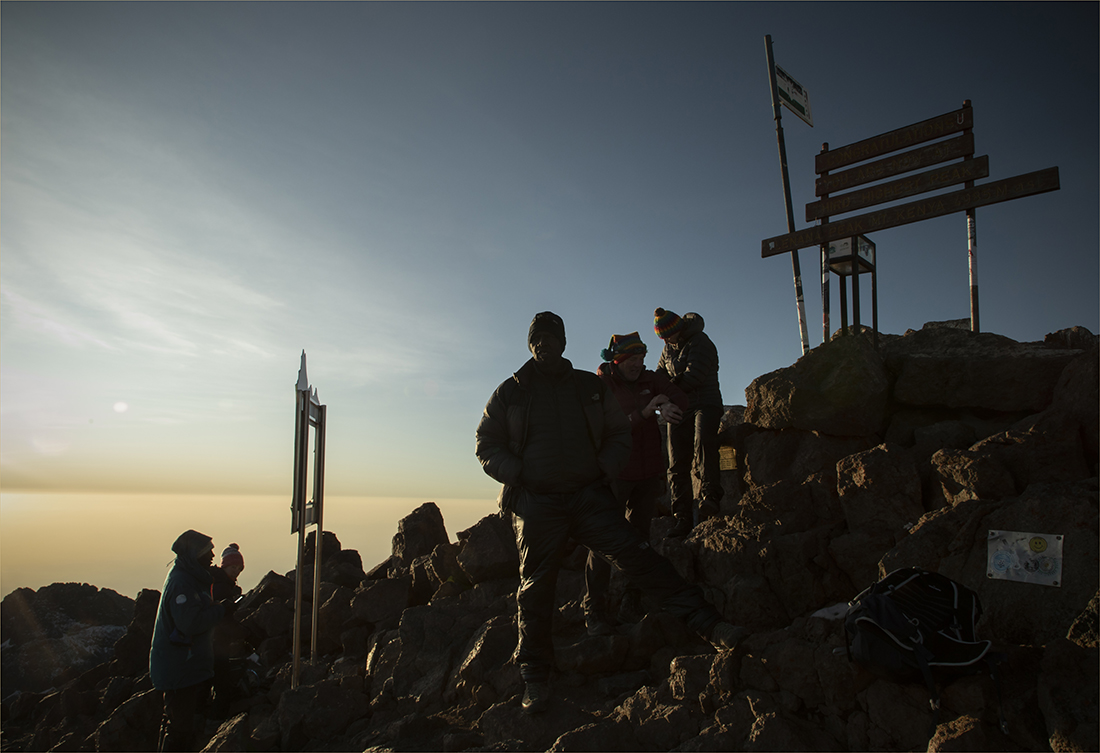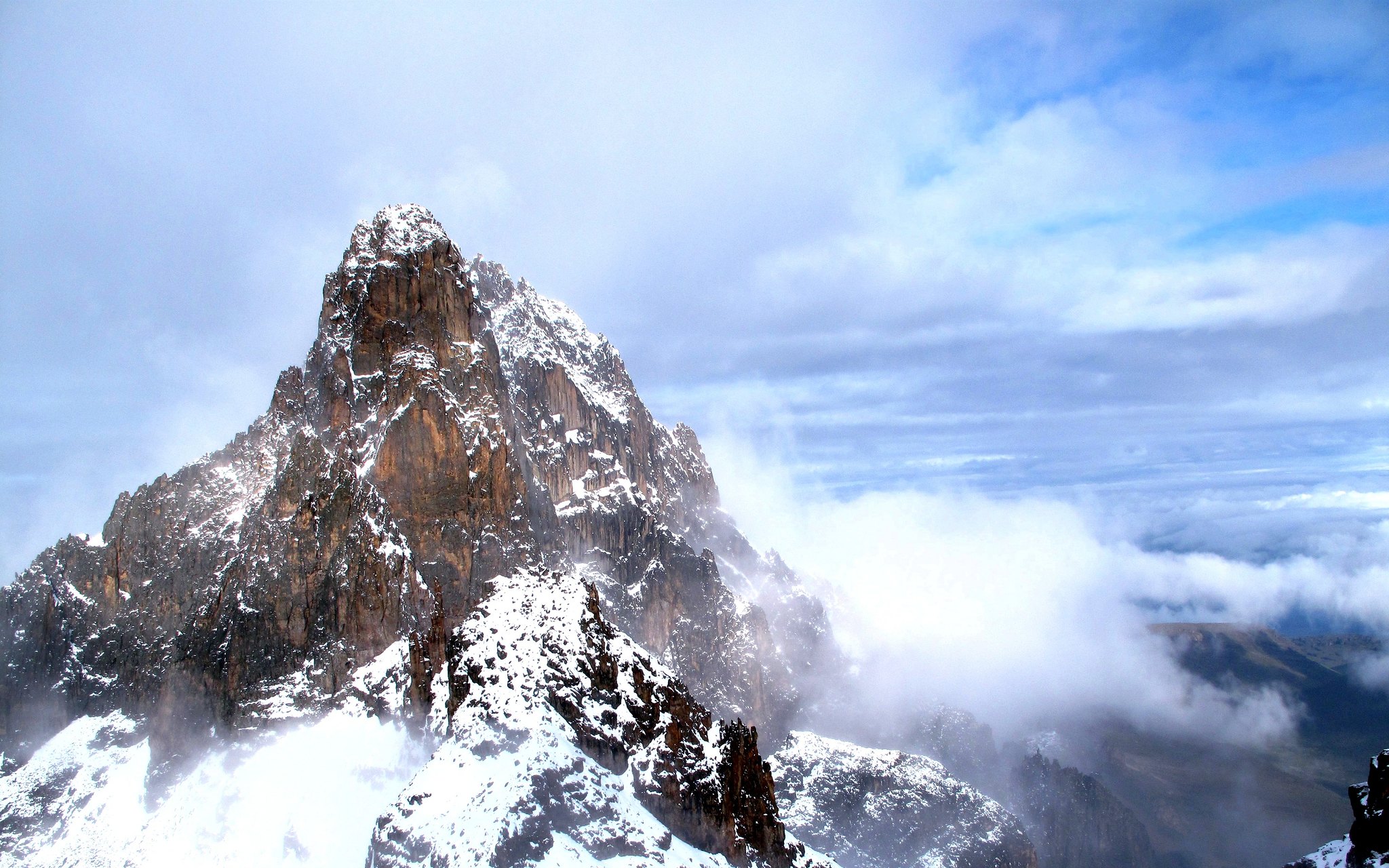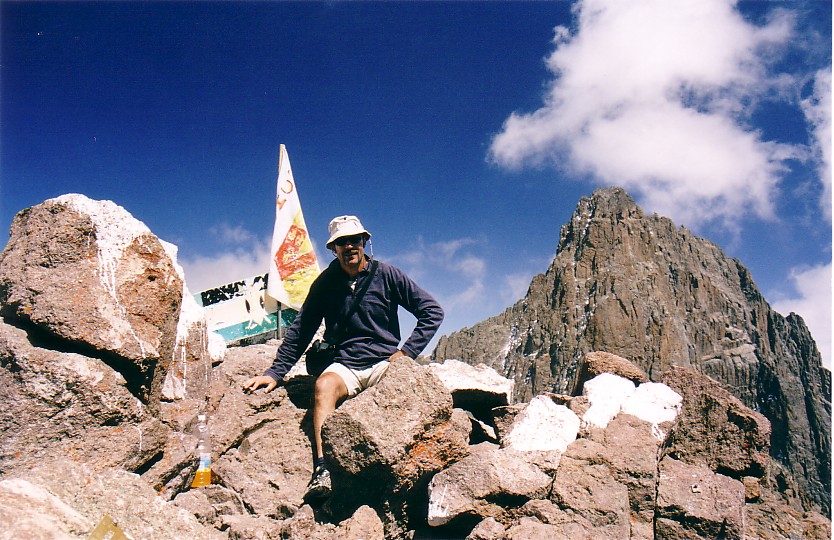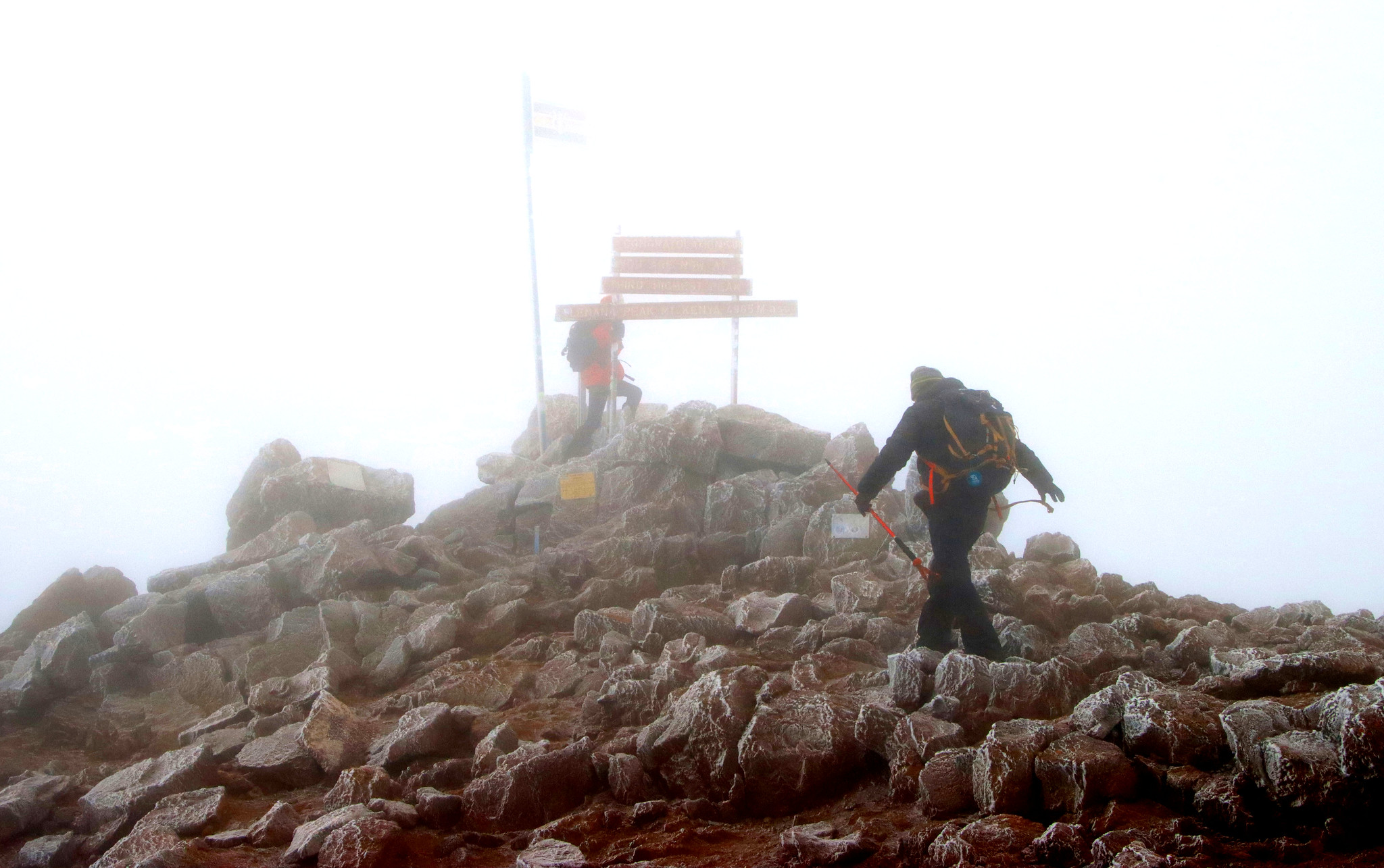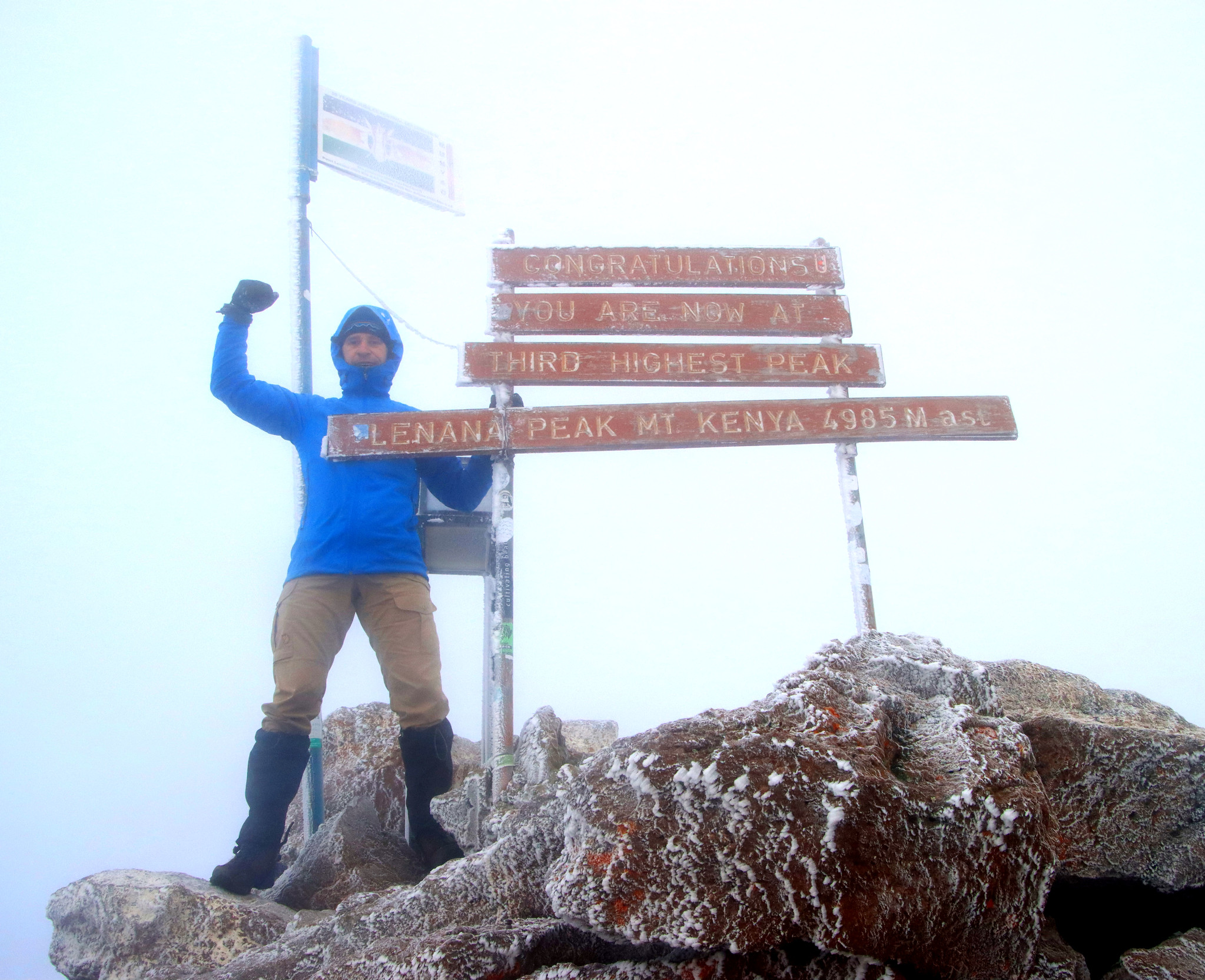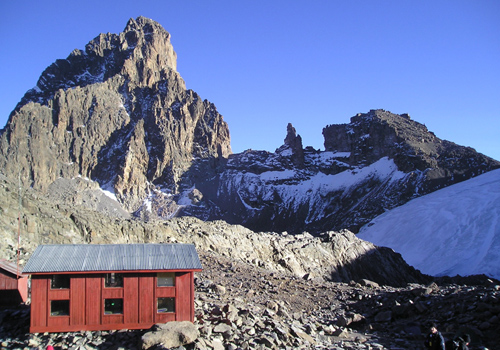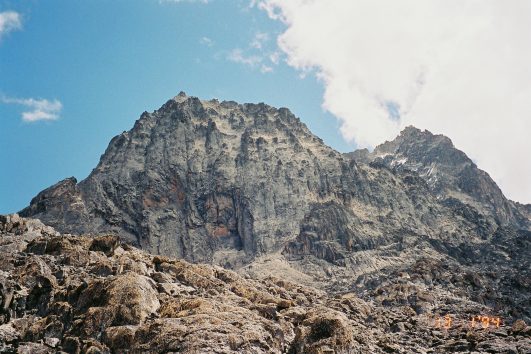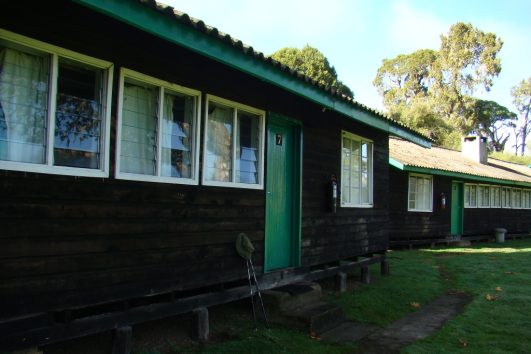Point Lenana Peak Elevation / Altitude: 4,985 m above sea level.
Lenana Peak is one of the most well-known peaks that can be found on Mount Kenya, and standing at 4,985m, it is the highest non-tactical peak that can be summited just via the use of hiking.
Point Lenana, also known as Olonana on Mount Kenya, is the highest Via Ferrata in the world.
Point Lenana, the highest peak you can reach without climbing gear on Mount Kenya, because who needs climbing gear when you’ve got sheer determination and a penchant for high-altitude selfies, right?
It is the third highest peak on the mountain, with Batian, which is located at an elevation of 5199 meters above sea level, being the real top of the mountain. In honour of one of the sons of a renowned Maasai Laibon, the name “Lenana” was given to the individual. Access to Point Lenana is available on virtually all climbing routes, and it is typically reached at any time between the hours before dawn and the early morning hours of the third day of the climb throughout the climb. On-site, there is a signpost that indicates the precise location of the point, which is situated on top of a ridge composed of enormous volcanic rocks. Additionally, there is a pole that features a miniature flag of Kenya with the word “Munyao” written on it. Munyao is the surname of Kisoi Munyao, who was the person who hoisted the flag at this location when Kenya gained its independence in 1963. From this vantage point, you may enjoy breathtaking views of the neighbouring peaks Batian and Nelion, which are situated across a vast valley that is sandwiched between two ridges, with Nelion (5188 meters above mean sea level) being the mountain that is closest to point Lenana. Point Lenana stands as one of the remarkable peaks of Mount Kenya, offering trekkers the opportunity to reach its summit without the need for professional rock climbing skills. It’s not only the highest point that can be climbed without technical expertise but also one of the most frequented peaks on the mountain.
- The View: Spectacular vistas that make you feel like you’re on top of the world. Literally. Because you kind of are.
- Achievement: Bragging rights. and breathtaking views and a story for life!
- Adventure: It’s not Everest, but it’s still an adventure. You get to feel like a real explorer without the risk of frostbite or Sherpas telling you to turn back.
- Route: Typically, you start from the Sirimon, Chogoria, or Naro Moru routes. Each has its own charm, like choosing between a scenic drive, a jungle trek, or a straightforward hike to your doom… I mean, to the summit.
- Duration: Usually a 3-4 day affair. Because even nature knows you can’t rush perfection.
- Gear: Warm clothes, good boots, and maybe a sense of humour. It gets cold, and sometimes, the only thing keeping you going is the thought of how hilarious it’ll be to tell people you slept in a hut with a name like “Mackinder’s Camp.”
- Nature: You’ll see more shades of green and blue than a painter on acid. Plus, there’s wildlife, but mostly of the “you’re too high up to care” variety.
- Challenge: It’s not just a walk in the park; it’s a walk in a park that’s trying to kill you with altitude sickness and thin air. But hey, no pain, no Instagram story, right?
- Mount Kenya is sacred in local lore, so climbing it might just make you a legend among your friends, or at least give you a good story for the next pub night.
Accessible Climbing Routes:
Virtually all climbing routes on Mount Kenya offer access to Point Lenana, making it a popular destination for trekkers. Typically, climbers reach Point Lenana in the early hours of the morning on the third day of their ascent. A signpost marks the actual point, atop a pile of volcanic rocks, accompanied by a pole bearing the flag of Kenya, commemorating Kisoi Munyao’s raising of the flag upon Kenya’s independence in 1963.
From Nairobi, there are two options for transportation to the national park: local transport (bus) or a rented vehicle (station wagon or minibus). The cost of a vehicle starts at $30, but the asking price can be higher. The park has a paved ring road, but the roads leading to the gates can be rough. There are three starting points for entry: Chogoria, Naro Moru, and Nanyuki.
The Chogoria route starts at the forest gate, where fees are paid. The path takes you through a dense semi-tropical rainforest, passing through rolling meadows with rough grass. Camp spots are available at the park gate, and the path gradually gets steeper, offering stunning views of Mt Kenya.
Sirimon route follows the summit of Lenana, down to McKinder’s Hut, and then through an open valley with vegetation and animals. Be careful when crossing the river, as the path can be difficult. After hours of walking, you’ll reach Old Moses/Judmeier Hut and continue to the park gate. A local bus to Nanyoki can be easily found when you hit the asphalt road.
Scenic Views and Surroundings:
From the summit of Point Lenana, trekkers are rewarded with breathtaking panoramic views of Mount Kenya’s other peaks, including Batian and Nelion. Positioned amidst a vast valley flanked by two ridges, Point Lenana offers a unique perspective of the surrounding landscape.
Location of Lenana Peak:
Point Lenana is centrally located within the Mount Kenya National Park, slightly to the east of Batian, the highest summit. Despite being within close proximity to other peaks, the actual walking distances can be quite lengthy due to the rugged terrain and varying elevations.
Climbing Point Lenana:
Point Lenana presents a relatively straightforward ascent for trekkers, involving a combination of scree, rocks, and occasional snow. While some sections may require basic climbing skills, the overall ascent is achievable for most climbers. The trek to Point Lenana takes adventurers through diverse landscapes, from agricultural lowlands to dense rainforests, high-altitude meadows, and rocky terrain adorned with glaciers and snow.
Words of Caution:
In recent years, changes in climate have impacted the Lewis Glacier, leaving behind steep ice covered with small stones on the western flank of Point Lenana. Trekkers should exercise caution when traversing this area, especially during warmer periods when the stones may become dislodged from the ice. Additionally, strong winds and sudden gusts are common on Point Lenana, requiring adequate preparation with warm and windproof clothing.
Getting There:
Trekkers typically start their journey to Point Lenana from one of three entry points to the national park: Chogoria, Naro Moru, or Nanyuki. From these mid-sized cities, adventurers embark on a trek through rough terrain to reach the park gates before beginning the ascent to Point Lenana.
When to Climb:
Point Lenana can be climbed year-round, although weather conditions vary throughout the seasons. The driest period is typically from January to February, offering clear mornings and minimal rainfall. Trekkers should be prepared for rain and fog during the wetter months of March to May and October to November.
Best Time To Climb Mount Kenya
Camping and Mountain Conditions:
Camping is permitted throughout the Mount Kenya National Park, with several huts available for accommodation along the trekking routes. Park rangers stationed at these huts provide valuable information on weather conditions and mountain forecasts, ensuring the safety of climbers during their ascent to Point Lenana.
Climbing Point Lenana on Mount Kenya is a rewarding adventure, offering trekkers the chance to experience the beauty and grandeur of Africa’s second-highest mountain. With its accessible routes, stunning vistas, and diverse landscapes, Point Lenana provides an unforgettable journey for both novice and experienced climbers alike.

